An important step to finding the right luxury watch is to first have a solid understanding of all the components that make up a watch. It’s no secret that watch-focused terminology can be confusing and overwhelming. This is due in part because many watch terms are either rooted in other languages or are vague and non-descriptive.
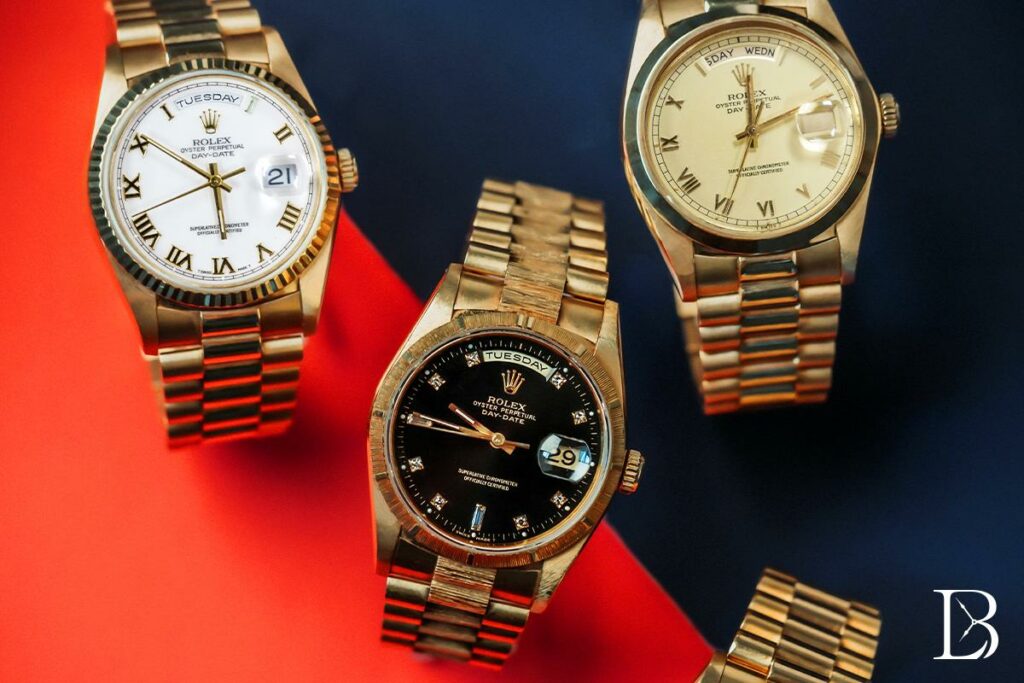
While watches come in all sorts of shapes, styles, and sizes, they all share a fundamental structure. And once you have a good grasp of basic watch architecture, you can make better decisions when shopping for a fine timepiece. If you’re looking to expand your horological knowledge, read this guide to the various parts of a watch, where we break down and explain all the major parts of a timepiece.
Watch Case
The main component of a watch is the case, which houses almost all other parts of the timepiece. Cases, also known as watch heads, are available in a wide range of shapes and materials, and it is what defines the style of the timepiece.
The most common case shape is round, yet cases can also be square, rectangular, oval, cushion, tonneau (which is French for “barrel”), asymmetrical, and so on. The most common material used to make watch cases is stainless steel but they can also be fashioned from gold, titanium, platinum, ceramic, bronze, or even a mix of materials.
Learn more: An Introduction to Common Materials Used in Watchmaking
The back of the case (the part that sits directly on your skin) is often referred to as the caseback, case-back, or case back. A solid caseback is fashioned entirely in metal and many brands use this space to engrave symbols, logos, or text. A display caseback, sometimes called an exhibition caseback, is fitted with a transparent crystal window to allow a view of the movement inside the case.
Watch Lugs
Lugs are protrusions on the watch case used to secure the band to the case. A good majority of watches have two lugs protruding from the top and bottom of the case and these lugs can be long or short, straight or curvy, wide or thin, plain or gem-set.
Some watches have hooded lugs (a.k.a. shrouded lugs), which include one horizontal bar on each side to fasten the band to the case. Other watches, such as those with integrated bracelets, avoid lugs altogether for a seamless link between bracelet and case.
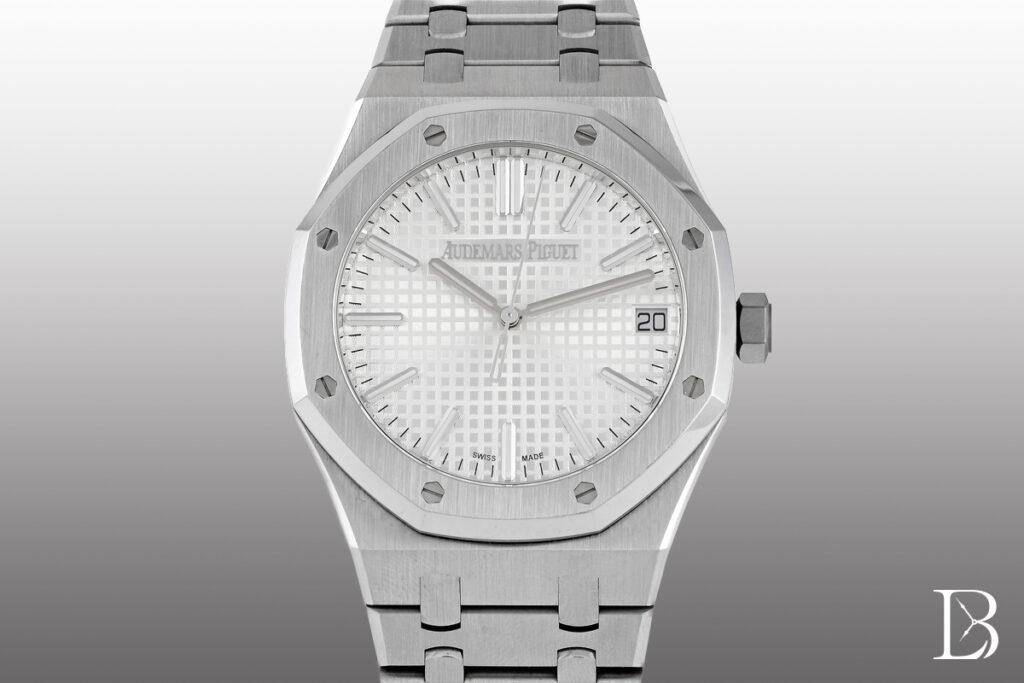
Winding Crown
The winding crown, or simply the crown, is the knob typically positioned on the right side of the case that serves to set the watch and wind up the movement inside mechanical watches (not quartz watches). In some instances, the crown can also be positioned on the left side. There are also wristwatches with the crown placed on top of the case at the 12 o’clock position, similar to a pocket watch.
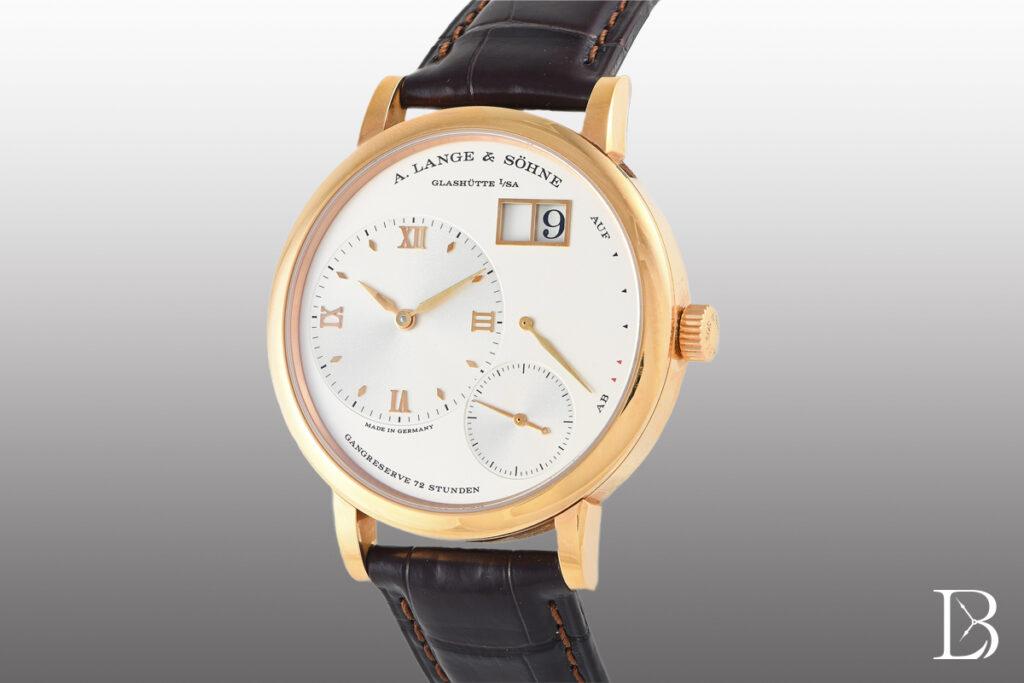
Depending on the timepiece, some crowns can simply pull out of the case with a gentle tug to adjust the time and/or date while others need to be unscrewed from the case before pulling the crown. Screw-down crowns offer better water resistance.
Pushers
In addition to the crown, some watches will include additional buttons on the case to operate various functions. These are called pushers and the most common type are chronograph pushers. A typical chronograph watch will have two pushers flanking the winding crown, where the upper one starts and stops the chronograph hand while the bottom one resets the chronograph hand back to zero.
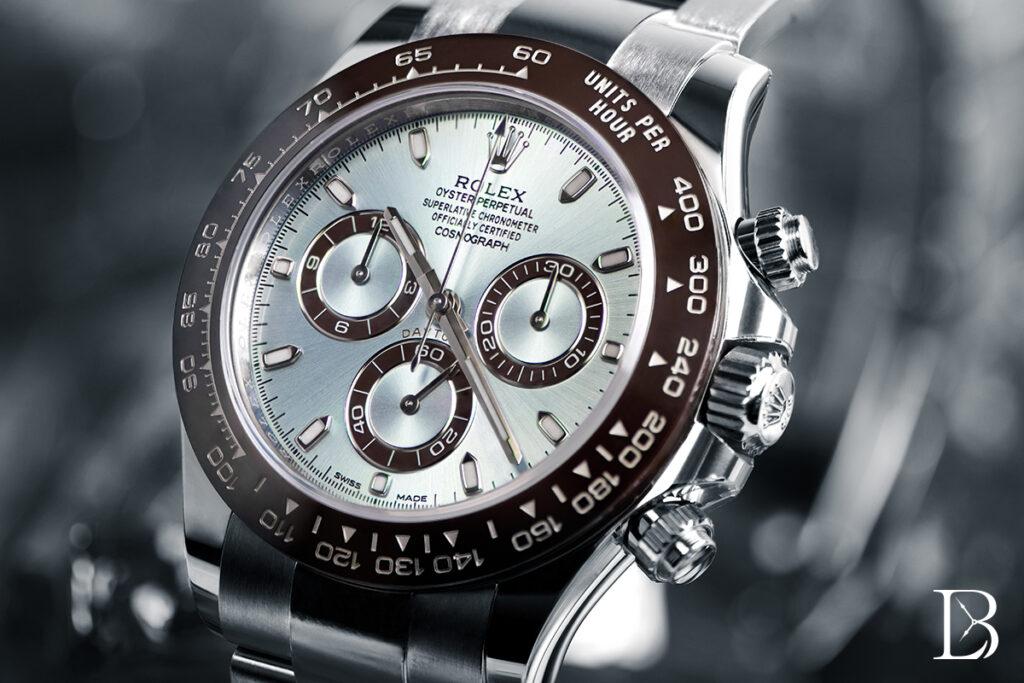
Back to Basics: What is a Chronograph Watch?
Watch Dial
The watch dial, commonly known as the face, is a plate that serves to display the time and any other indicators the watch may have. Dials can range from time-only dials (which only feature hands to tell the time) to time and date dials (which include a date display) to more complex dials (which can include a variety of other indicators).
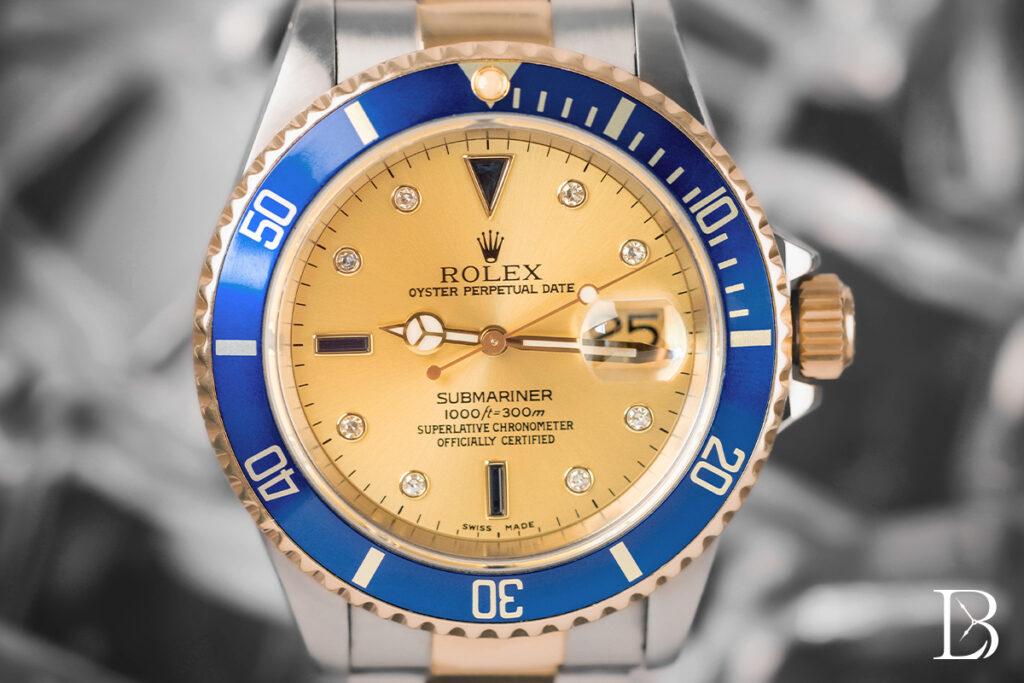
More on dials: A Complete Guide to Every Special Rolex Dial Ever Produced
While most luxury watch dials will be analog, some high-end watchmakers offer dials with digital displays too. There are also “ana-digi” dials, which combine a mix of digital indicators and analog hands.
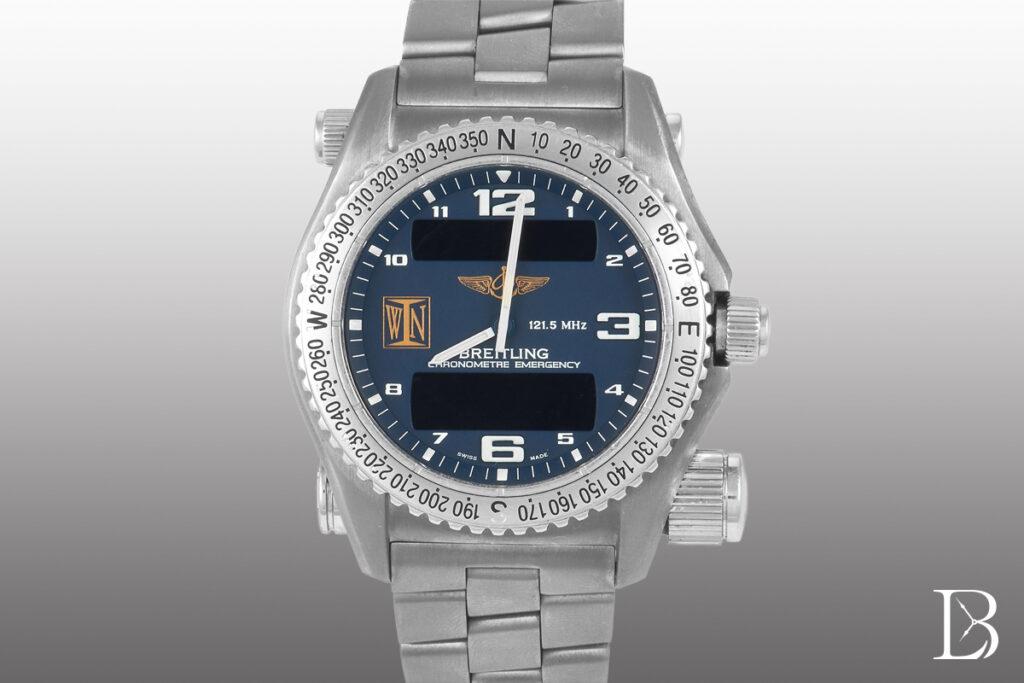
Not only do dials come in a variety of colors, materials, and finishes, but they also feature different styles of hour markers and hands, which can help further define the style of the watch. For instance, thin hands and baton-type hour markers are commonly found on classic watches while sports watches typically have oversized hands and large hour markers.
Complications
A timepiece complication is any function on a watch that does more than tell time. For example, calendar indications, chronographs, additional time zone displays, moon phases, alarms, power reserve indicators, and others are all considered complications. The more complications a watch has, the more information a dial has to display.
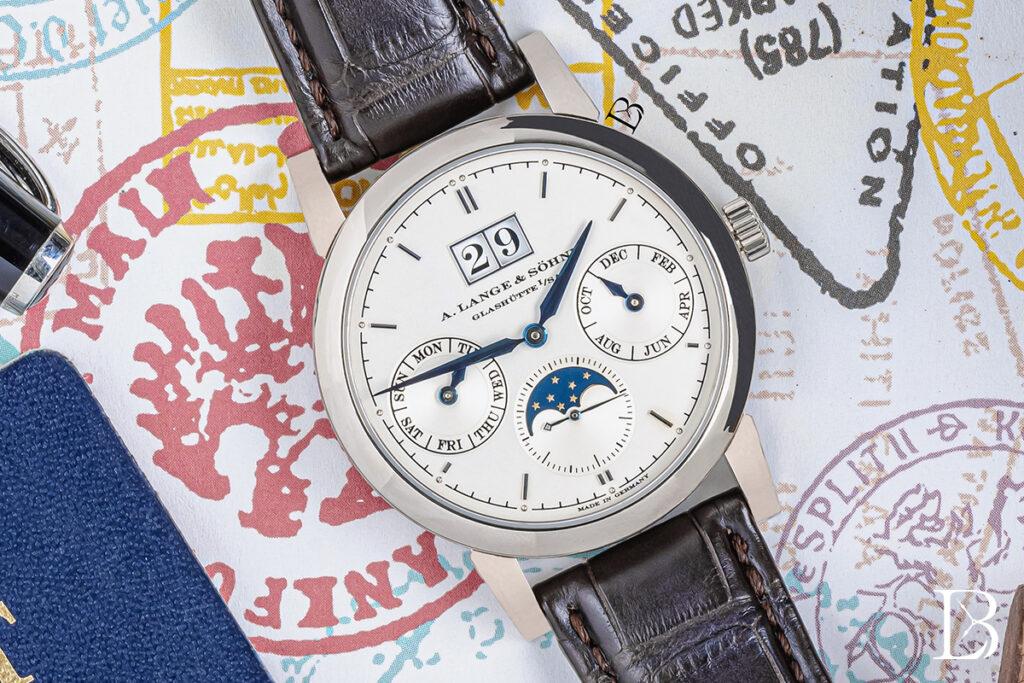
Learn more about complications:
What is a Perpetual Calendar?
What is an Annual Calendar?
What is a Grand Complication?
What is a Minute Repeater?
What is a World Time?
Subsidiary Dials
Some dials also include subsidiary dials (also known as subdials, registers, or counters), which are circular (sometimes other shapes) areas on the dial that can display a variety of functions such as an additional time zone, a small seconds hand, the date/day/month, and so on.
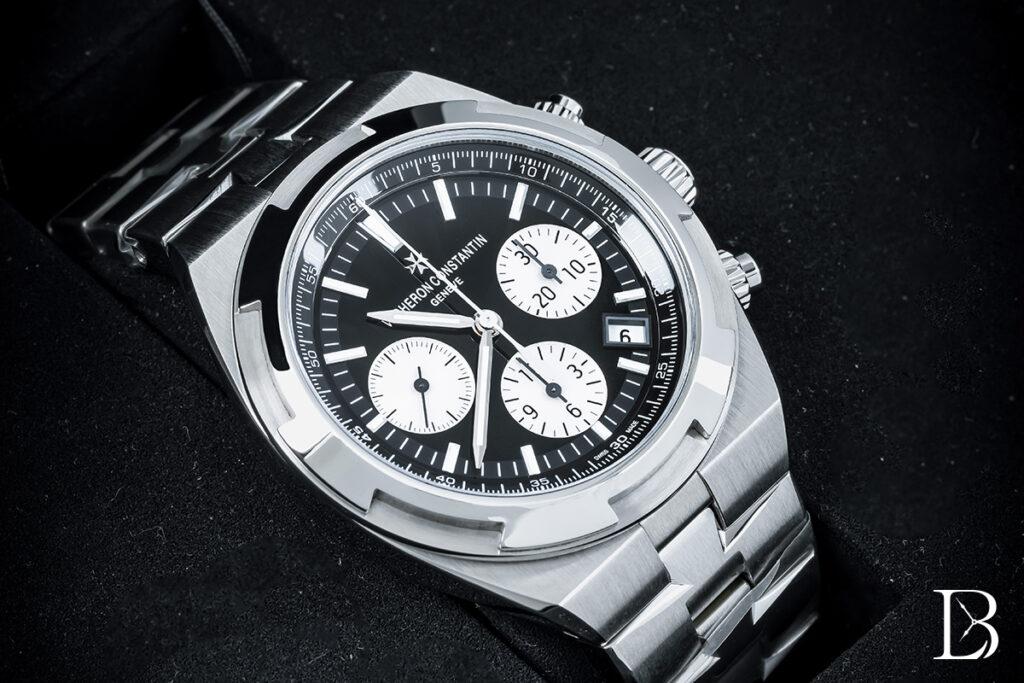
Apertures & Windows
Some dials will include apertures, better known as windows, which are openings in the dial that can display a variety of functions such as date/day/month, moon phase, day/night indication, and so on.
Watch Hands
The hands (or handset) sweep around the dial to indicate the time. You’ll sometimes hear the terms “three-hander” or “two-hander” to describe time-only dials, where the former will have hands for the hour, minute, and second while the latter will only include hour and minute hands. In addition to the main hour/minute/second hands, some watches also include extra hands to display other functions.
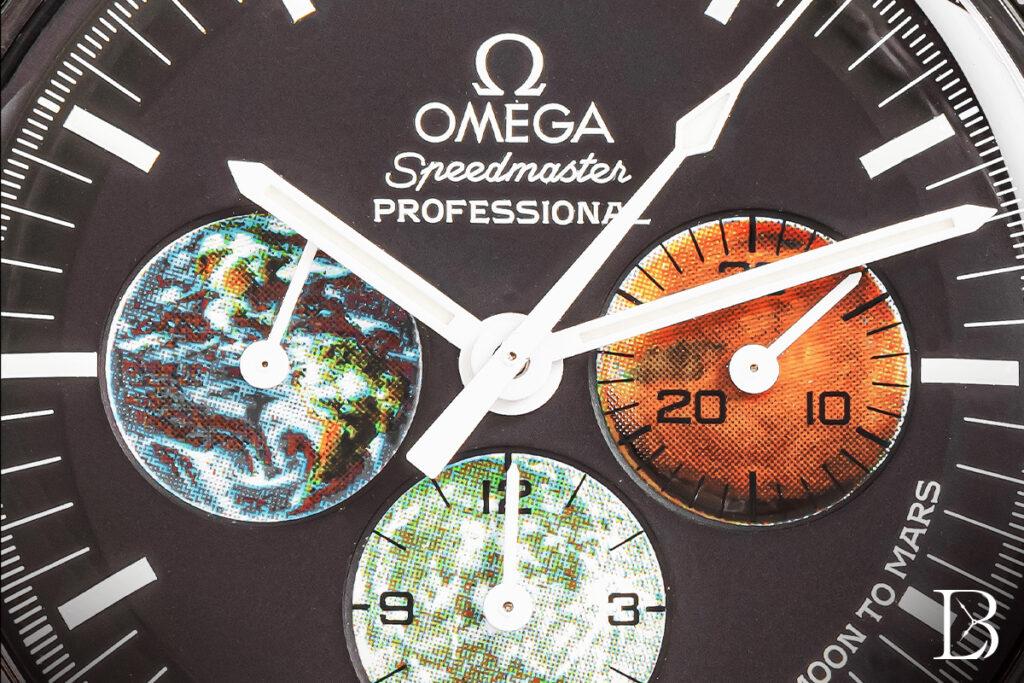
Watch hands are sometimes the most distinctive parts of a watch, and are made in a variety of styles. Some popular watch hand styles include Mercedes, broad arrow, alpha, straight, Dauphine, Breguet, sword, and others.
Hour Markers
As their name suggests, hour markers, also known as indexes or indices, are positioned around the dial to denote the hour. While there are so many types of hour markers the most popular ones include stick, baton, tapered, circular, triangular, Arabic numerals, Roman numerals, or a mix of all the above.
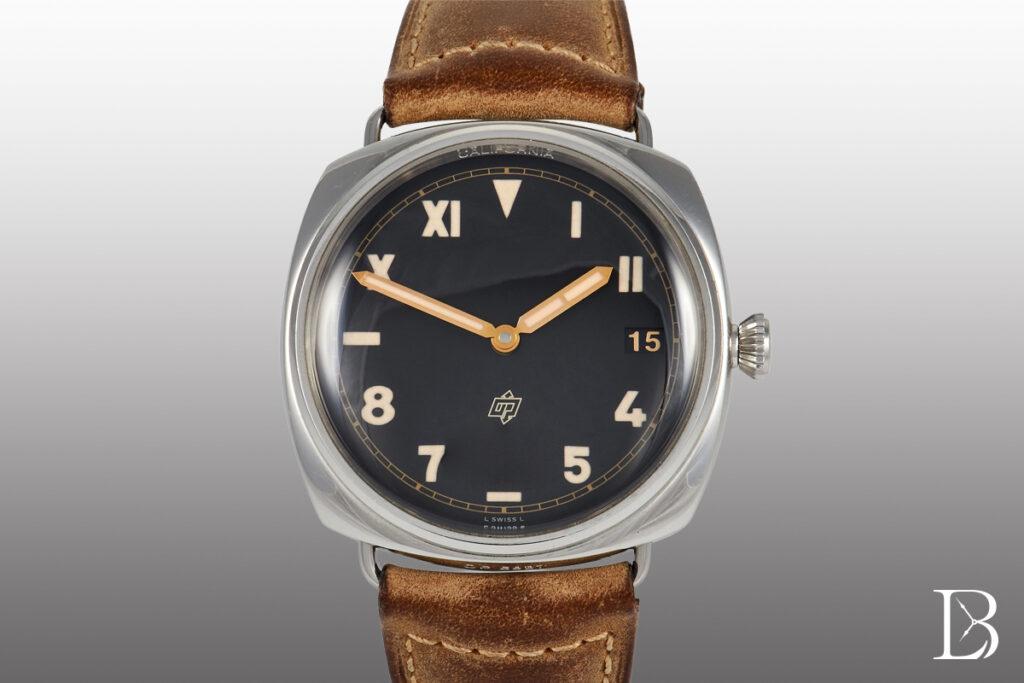
Lume
Lume refers to luminescence on a watch. Some dials will include several components (such as hands and hour markers) that are coated in luminous material so that the watch face glows in the dark.
Modern watches typically use photoluminescent materials, which require a charge from a light source before they glow in low light. Some common brand names for luminous materials used on watches include Luminova, SuperLuminova, and Chromalight. Conversely, vintage watches relied on continuously glowing radioluminescent materials such as radium and tritium.
Crystal
In watch-speak, the crystal refers to the glass-like piece that covers the dial. Some watches also have a crystal component on the caseback so you can see the movement inside the watch. Most high-end watch brands will use synthetic sapphire crystal since this material offers better resistance to scratching and shattering than other materials. Furthermore, sapphire crystal is ultra-transparent, which gives a clear view of the dial.
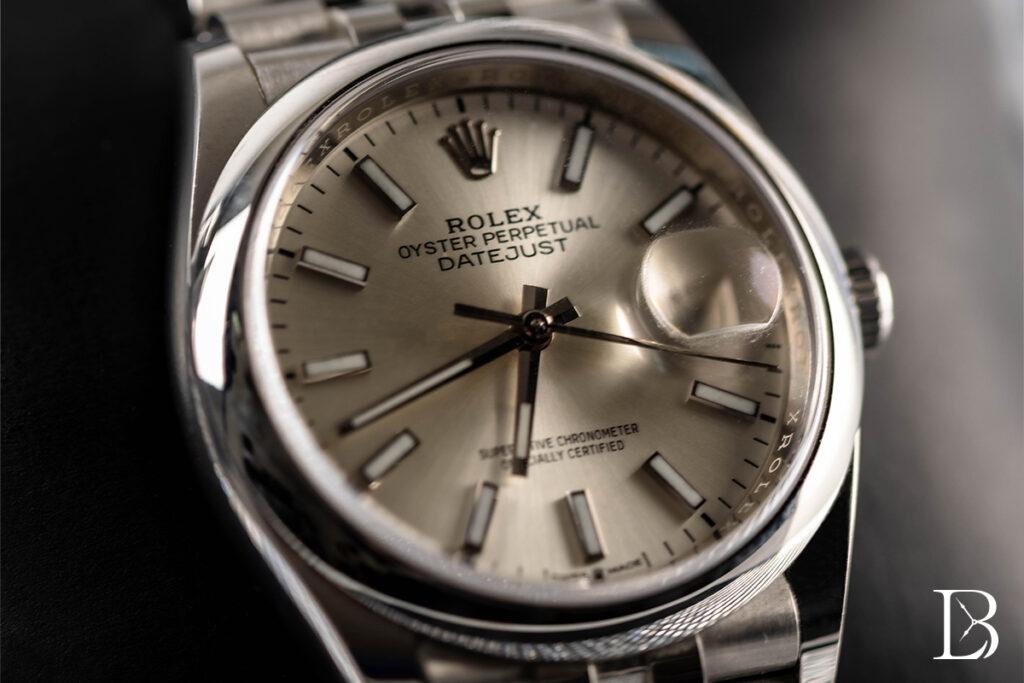
On the other hand, vintage luxury watches were typically fitted with acrylic/plastic crystals, which are prone to scratching but those scratches can be easily buffed out. Some collectors appreciate the “softer” look of an acrylic crystal found on vintage timepieces over the sharper style of modern sapphire crystal. Some brands still use acrylic crystal today on select vintage-inspired watches. You may come across crystal names like Perspex, Plexiglass, and Hesalite, which are all simply brand names of acrylic/plastic crystals.
Gasket
High-end watches typically feature gaskets, which are rubber rings used to create airtight seals to prevent water or dust from entering the watch. These are generally hidden from plain sight and tucked under the crystal, caseback, and winding crown.
Since gaskets can wear out after a while—which compromises the watch’s water resistance—it’s common to have gaskets replaced during a watch service.
Bezel
The bezel is the frame around the dial that sits on top of the case to hold the crystal in place. While most bezels are round (because most watch cases are round), there are other bezel shapes too including square, rectangular, oval, octagonal, tonneau, and more.
Some bezels add a decorative touch to the watch, such as those that are fluted, gem-set, engraved, or decorated with an intricate pattern. Other bezels offer additional functionality to the watch if they are marked with scales and/or rotate.
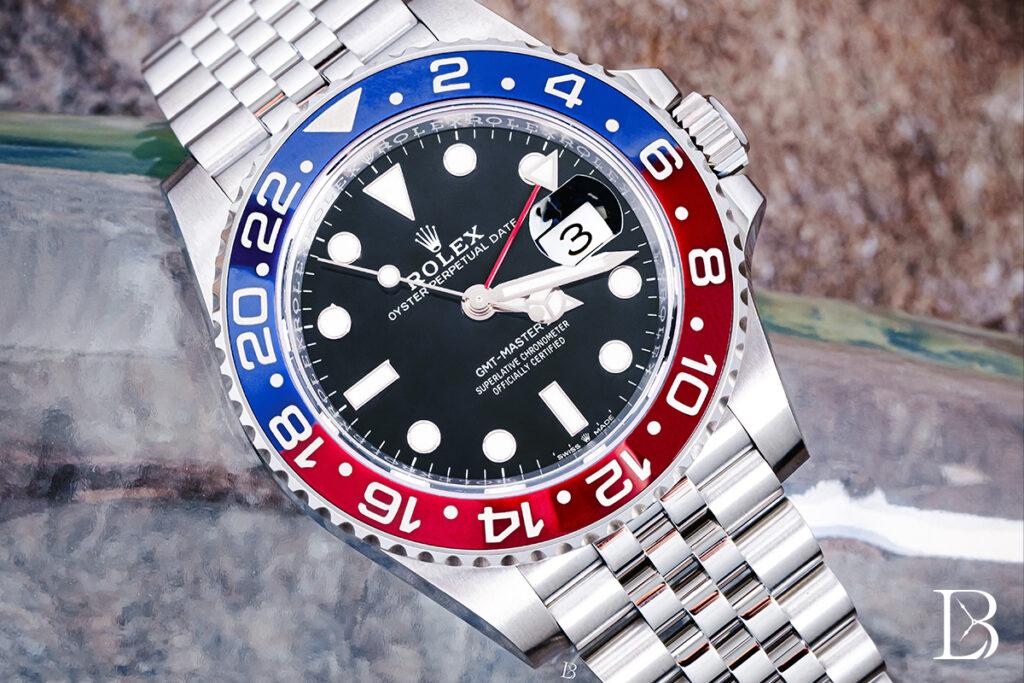
A few prevalent examples of functional bezels include 60-minute unidirectional rotating bezels found on dive watches, 24-hour marked bezels found on GMT watches, and tachymeter-marked bezels found on chronograph watches.
Learn More:
What is a Dive Watch?
What is a GMT Watch?
Along with finish and functionality, bezels can be crafted from various materials too. Some bezels match the metal of the case while others are fashioned from a contrasting metal—such as on two-tone gold and steel pieces. There are also bezels made from aluminum or ceramic, which are typically found on sportier models.
Band
A watch can come fitted with a metal bracelet, ceramic bracelet, leather strap, rubber strap, or fabric strap, and these are collectively known as watch bands.
The watch clasp fastens both ends of the bracelet or strap together around the wrist. Clasps come in a variety of styles from simple tang buckles (also known as pin buckles) to elaborate folding deployant clasps for added security. Some clasps also feature a clever micro-adjustment system to allow the wearer to shorten or lengthen the band by a few millimeters for optimal comfort.
Learn More: A Primer on the Different Types of Watch Bands, Straps, and Bracelets
Watch Movement
The movement, sometimes called a caliber, is the engine of the watch, which is housed inside the case beneath the dial. This is the mechanism that powers the watch, moves the timekeeping hands, and controls any other functions that a watch may have.
Learn More: A Primer on Watch Movements
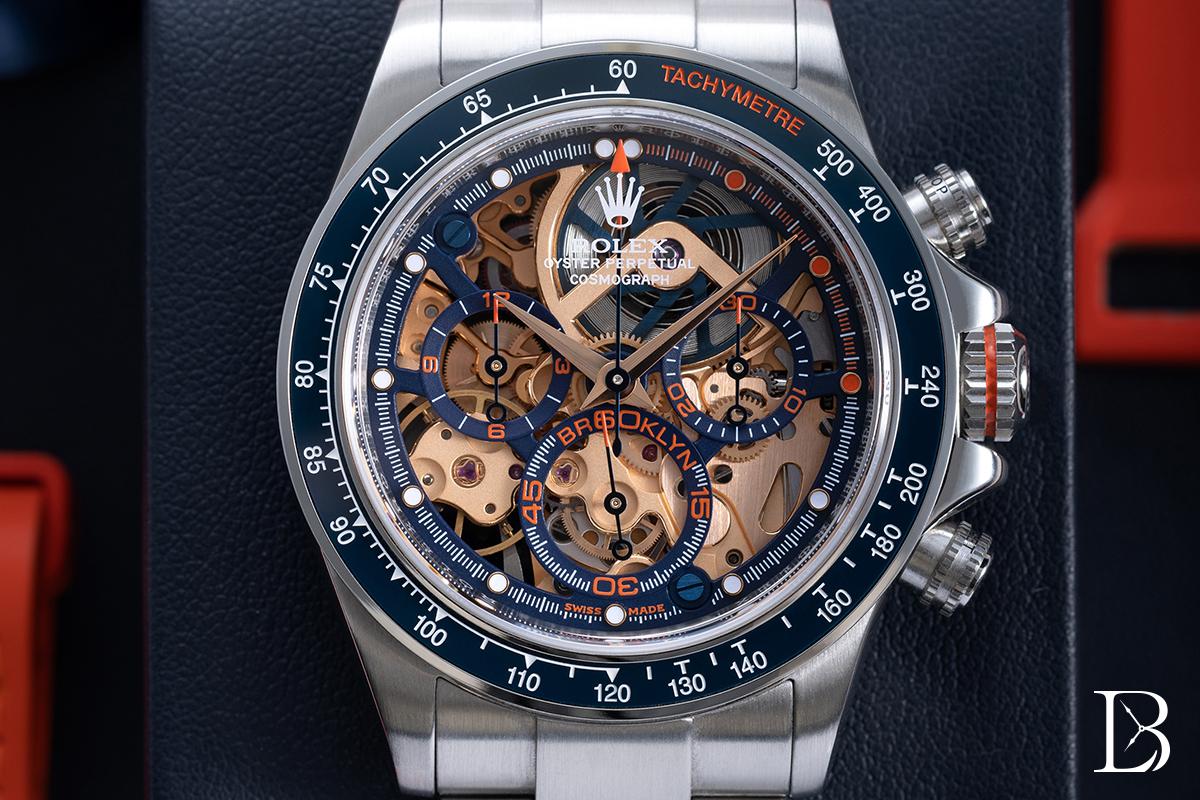
There are three main types of movements to be aware of. There are manual winding movements, automatic movements, and quartz movements. Manual winding and automatic movements are both mechanical movements.
More Watch.Edu Content:
Types of Watches
What is a GADA Watch?
Your Go-to Guide to Rolex Nicknames

